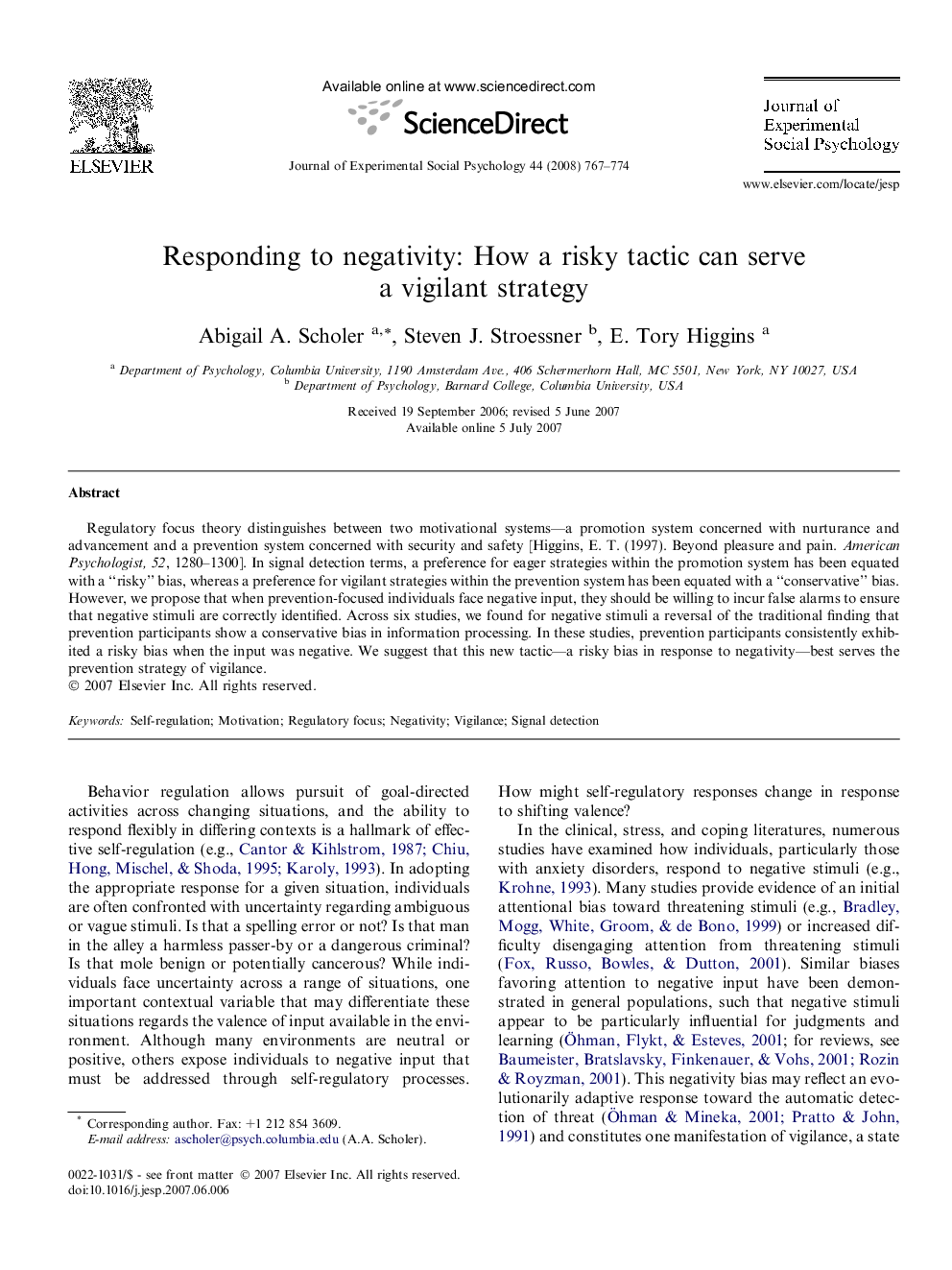| Article ID | Journal | Published Year | Pages | File Type |
|---|---|---|---|---|
| 948129 | Journal of Experimental Social Psychology | 2008 | 8 Pages |
Regulatory focus theory distinguishes between two motivational systems—a promotion system concerned with nurturance and advancement and a prevention system concerned with security and safety [Higgins, E. T. (1997). Beyond pleasure and pain. American Psychologist, 52, 1280–1300]. In signal detection terms, a preference for eager strategies within the promotion system has been equated with a “risky” bias, whereas a preference for vigilant strategies within the prevention system has been equated with a “conservative” bias. However, we propose that when prevention-focused individuals face negative input, they should be willing to incur false alarms to ensure that negative stimuli are correctly identified. Across six studies, we found for negative stimuli a reversal of the traditional finding that prevention participants show a conservative bias in information processing. In these studies, prevention participants consistently exhibited a risky bias when the input was negative. We suggest that this new tactic—a risky bias in response to negativity—best serves the prevention strategy of vigilance.
